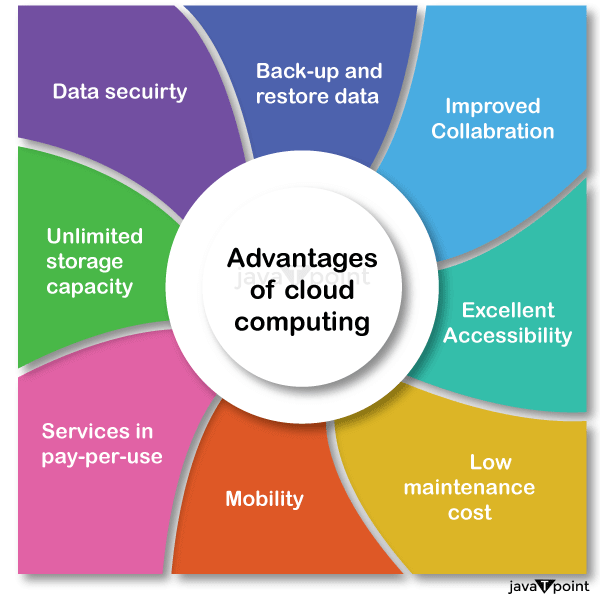Achieve Seamless Scalability With Cloud Services
In the ever-evolving landscape of cloud services, accomplishing smooth scalability stands as a cornerstone for modern-day organizations looking for to remain competitive and versatile. The capability to easily expand or get sources in reaction to changing demands is a crucial benefit in today's busy digital atmosphere. By grasping the art of scalable cloud solutions, organizations can not only enhance performance and simplify procedures yet additionally pave the method for future development and development. The quest for smooth scalability with cloud services unveils a globe of possibilities for those happy to accept the transformative power of dynamic resource monitoring.
Benefits of Cloud Scalability
Cloud scalability provides companies the versatility to dynamically change resources based on demand, making certain optimal efficiency and price efficiency. Additionally, cloud scalability advertises technology and testing by enabling organizations to quickly test brand-new concepts and scale them as needed. Ultimately, the benefits of cloud scalability expand past expense financial savings to incorporate improved efficiency, dexterity, and development.
Trick Features for Scaling
Reliable scaling in cloud services depends on crucial attributes that make it possible for companies to change resources dynamically based on demand. An additional key attribute is scalability, making it possible for systems to deal with increased workload by including resources seamlessly. In general, these essential functions collectively encourage organizations to achieve smooth scalability in cloud solutions.
Applying Auto-Scaling Methods
To properly enhance source allowance and adjust to differing workloads, companies should tactically execute auto-scaling strategies in their cloud services facilities. Auto-scaling allows systems to instantly readjust the variety of compute sources based on real-time need. There are various auto-scaling strategies that organizations can use, such as anticipating scaling, which uses historical data to forecast future resource needs, and reactive scaling, which reacts to current workload changes.

Ideal Practices for Scalability
For companies aiming to improve description their scalability in cloud services, executing finest practices is important for ideal efficiency and source administration. One secret ideal method is designing applications with a microservices design. This strategy breaks down applications right into smaller sized, independent services that can be released, upgraded, and scaled independently, enabling greater versatility and scalability.
One more essential practice is utilizing containerization modern technology, such as Docker or Kubernetes. Containers enable the packaging of applications and their dependences right into isolated units, making it simpler to scale parts separately and deploy them regularly across different atmospheres.
In addition, implementing automated implementation and facilities as code (IaC) can streamline scalability efforts (linkdaddy cloud services). Automation devices like Terraform or Ansible help in provisioning and handling resources effectively, lowering manual mistakes and enabling fast scalability
Moreover, keeping track of efficiency metrics, establishing alerts, and conducting regular capacity planning are crucial techniques to make certain aggressive scalability management. By sticking to these finest techniques, organizations can accomplish seamless scalability in their cloud services while enhancing efficiency and resource usage.
Monitoring Efficiency Metrics
When examining the performance of cloud services scalability, very closely keeping track of efficiency metrics is necessary for making certain ideal functionality and source appropriation. By continuously tracking essential efficiency signs (KPIs) such as action times, source, latency, and throughput use, companies can acquire beneficial understandings right into the wellness and effectiveness of their cloud facilities. Monitoring efficiency metrics permits for the early discovery of prospective bottlenecks or issues that can influence scalability, allowing aggressive steps to be taken to resolve them before they escalate.

Verdict
In final thought, achieving smooth scalability with cloud services is vital for organizations to enhance efficiency, enhance development, and preserve high efficiency levels during peak times. By leveraging the advantages of cloud i loved this scalability, applying auto-scaling methods, making use of key attributes such as elasticity and automation, and adhering to ideal methods like application layout and efficiency tracking, services can successfully scale their systems while making best use of source usage and performance.
The quest for smooth scalability with cloud services introduces a globe of possibilities for those ready to welcome the view transformative power of vibrant source monitoring.
Cloud scalability offers companies the flexibility to dynamically readjust resources based on demand, making certain optimal performance and cost efficiency. Another key function is scalability, making it possible for systems to handle increased work by adding sources perfectly.For companies intending to enhance their scalability in cloud solutions, implementing best methods is essential for optimal efficiency and source monitoring.When analyzing the effectiveness of cloud solutions scalability, closely keeping an eye on performance metrics is imperative for making certain ideal functionality and source appropriation.